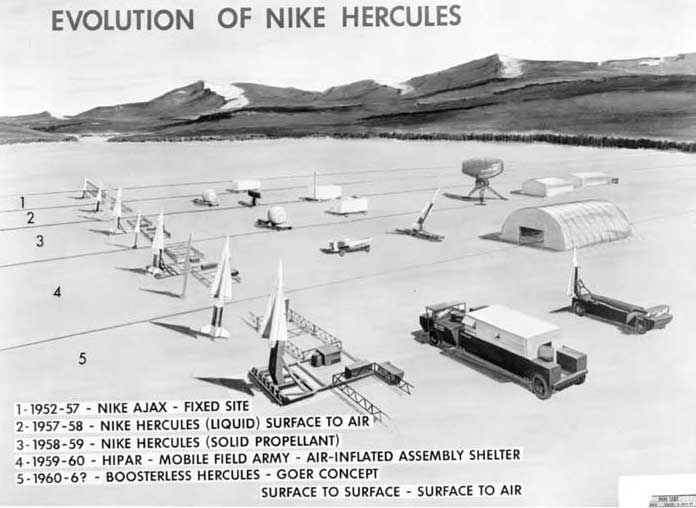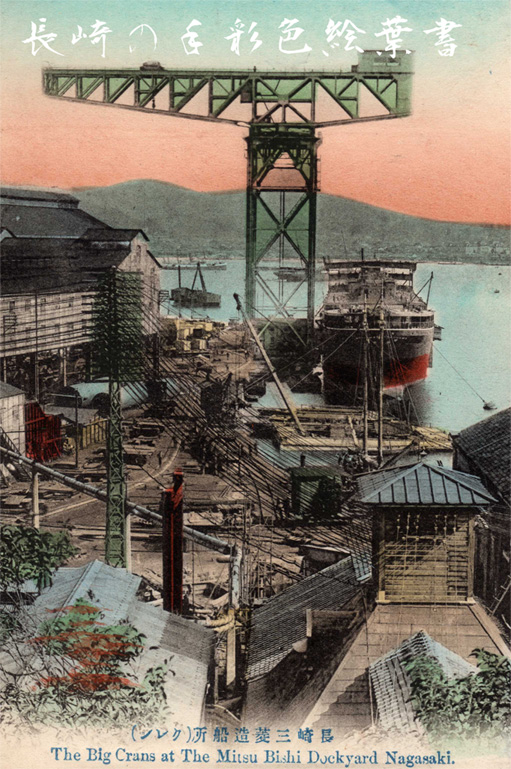|
Nike J
image:Jasdf-NikeJ.jpg, 300px, Nike J at Hamamatsu Air Base NIKE J was the name for the Japan, Japanese version of the Nike-Hercules surface-to-air missile. It was produced by Mitsubishi Heavy Industries. First test firings of the missile occurred in November 1970. The Nike J was also a different version of the usual Nike Hercules, in that way, that it could not be mated with a special (nuclear) warhead. * Length: 12.5 m * Diameter: 0.8 m * Wing span: 2.1 m * Weight: 4.5 tons * Range: 130 km * Speed: Mach 3 * Propulsion: Two stage solid fuel rocket * Guidance: Radio command guidance See also * MIM-14 Nike-Hercules * Nike Javelin External links * http://ed-thelen.org/h_mono-5.html Surface-to-air missiles of Japan Project Nike Japan–United States relations Military equipment introduced in the 1970s {{missile-stub ... [...More Info...] [...Related Items...] OR: [Wikipedia] [Google] [Baidu] |
Japan
Japan ( ja, 日本, or , and formally , ''Nihonkoku'') is an island country in East Asia. It is situated in the northwest Pacific Ocean, and is bordered on the west by the Sea of Japan, while extending from the Sea of Okhotsk in the north toward the East China Sea, Philippine Sea, and Taiwan in the south. Japan is a part of the Ring of Fire, and spans Japanese archipelago, an archipelago of List of islands of Japan, 6852 islands covering ; the five main islands are Hokkaido, Honshu (the "mainland"), Shikoku, Kyushu, and Okinawa Island, Okinawa. Tokyo is the Capital of Japan, nation's capital and largest city, followed by Yokohama, Osaka, Nagoya, Sapporo, Fukuoka, Kobe, and Kyoto. Japan is the List of countries and dependencies by population, eleventh most populous country in the world, as well as one of the List of countries and dependencies by population density, most densely populated and Urbanization by country, urbanized. About three-fourths of Geography of Japan, the c ... [...More Info...] [...Related Items...] OR: [Wikipedia] [Google] [Baidu] |
Nike-Hercules
The Nike Hercules, initially designated SAM-A-25 and later MIM-14, was a surface-to-air missile (SAM) used by U.S. and NATO armed forces for medium- and high-altitude long-range air defense. It was normally armed with the W31 nuclear warhead, but could also be fitted with a conventional warhead for export use. Its warhead also allowed it to be used in a secondary surface-to-surface role, and the system also demonstrated its ability to hit other short-range missiles in flight. Hercules was originally developed as a simple upgrade to the earlier MIM-3 Nike Ajax, allowing it to carry a nuclear warhead in order to defeat entire formations of high-altitude supersonic targets. It evolved into a much larger missile with two solid fuel stages that provided three times the range of the Ajax. Deployment began in 1958, initially at new bases, but it eventually took over many Ajax bases as well. At its peak, it was deployed at over 130 bases in the US alone. Hercules was officially referred t ... [...More Info...] [...Related Items...] OR: [Wikipedia] [Google] [Baidu] |
Surface-to-air Missile
A surface-to-air missile (SAM), also known as a ground-to-air missile (GTAM) or surface-to-air guided weapon (SAGW), is a missile designed to be launched from the ground to destroy aircraft or other missiles. It is one type of anti-aircraft system; in modern armed forces, missiles have replaced most other forms of dedicated anti-aircraft weapons, with anti-aircraft guns pushed into specialized roles. The first attempt at SAM development took place during World War II, but no operational systems were introduced. Further development in the 1940s and 1950s led to operational systems being introduced by most major forces during the second half of the 1950s. Smaller systems, suitable for close-range work, evolved through the 1960s and 1970s, to modern systems that are man-portable. Shipborne systems followed the evolution of land-based models, starting with long-range weapons and steadily evolving toward smaller designs to provide a layered defence. This evolution of design increasin ... [...More Info...] [...Related Items...] OR: [Wikipedia] [Google] [Baidu] |
Mitsubishi Heavy Industries
is a Japanese multinational engineering, electrical equipment and electronics corporation headquartered in Tokyo, Japan. MHI is one of the core companies of the Mitsubishi Group and its automobile division is the predecessor of Mitsubishi Motors. MHI's products include aerospace and automotive components, air conditioners, elevators, forklift trucks, hydraulic equipment, printing machines, missiles, tanks, power systems, ships, aircraft, railway systems, and space launch vehicles. Through its defense-related activities, it is the world's 23rd-largest defense contractor measured by 2011 defense revenues and the largest based in Japan. History In 1857, at the request of the Tokugawa Shogunate, a group of Dutch engineers were invited, including Dutch naval engineer Hendrik Hardes, and began work on the ''Nagasaki Yotetsusho'' 長崎鎔鉄所 , a modern, Western-style foundry and shipyard near the Dutch settlement of Dejima, at Nagasaki. This was renamed ''Naga ... [...More Info...] [...Related Items...] OR: [Wikipedia] [Google] [Baidu] |
Solid Fuel Rocket
A solid-propellant rocket or solid rocket is a rocket with a rocket engine that uses solid propellants (fuel/oxidizer). The earliest rockets were solid-fuel rockets powered by gunpowder; they were used in warfare by the Arabs, Chinese, Persians, Mongols, and Indians as early as the 13th century. All rockets used some form of solid or powdered propellant up until the 20th century, when liquid-propellant rockets offered more efficient and controllable alternatives. Solid rockets are still used today in military armaments worldwide, model rockets, solid rocket boosters and on larger applications for their simplicity and reliability. Since solid-fuel rockets can remain in storage for an extended period without much propellant degradation and because they almost always launch reliably, they have been frequently used in military applications such as missiles. The lower performance of solid propellants (as compared to liquids) does not favor their use as primary propulsion in modern ... [...More Info...] [...Related Items...] OR: [Wikipedia] [Google] [Baidu] |
Radio
Radio is the technology of signaling and communicating using radio waves. Radio waves are electromagnetic waves of frequency between 30 hertz (Hz) and 300 gigahertz (GHz). They are generated by an electronic device called a transmitter connected to an antenna which radiates the waves, and received by another antenna connected to a radio receiver. Radio is very widely used in modern technology, in radio communication, radar, radio navigation, remote control, remote sensing, and other applications. In radio communication, used in radio and television broadcasting, cell phones, two-way radios, wireless networking, and satellite communication, among numerous other uses, radio waves are used to carry information across space from a transmitter to a receiver, by modulating the radio signal (impressing an information signal on the radio wave by varying some aspect of the wave) in the transmitter. In radar, used to locate and track objects like aircraft, ships, spacecraf ... [...More Info...] [...Related Items...] OR: [Wikipedia] [Google] [Baidu] |
Command Guidance
Command guidance is a type of missile guidance in which a ground station or aircraft relay signals to a guided missile via radio control or through a wire connecting the missile to the launcher and tell the missile where to steer to intercept its target. This control may also command the missile to detonate, even if the missile has a fuze. Typically, the system giving the guidance commands is tracking both the target and the missile or missiles via radar. It determines the positions and velocities of a target and a missile, and calculates whether their paths will intersect. If not, the guidance system will relay commands to a missile, telling it to move the fins in a way that steers in the direction needed to maneuver to an intercept course with the target. If the target maneuvers, the guidance system can sense this and update the missiles' course continuously to counteract such maneuvering. If the missile passes close to the target, either its own proximity or contact fuze will ... [...More Info...] [...Related Items...] OR: [Wikipedia] [Google] [Baidu] |
MIM-14 Nike-Hercules
The Nike Hercules, initially designated SAM-A-25 and later MIM-14, was a surface-to-air missile (SAM) used by U.S. and NATO armed forces for medium- and high-altitude long-range air defense. It was normally armed with the W31 nuclear warhead, but could also be fitted with a conventional warhead for export use. Its warhead also allowed it to be used in a secondary surface-to-surface role, and the system also demonstrated its ability to hit other short-range missiles in flight. Hercules was originally developed as a simple upgrade to the earlier MIM-3 Nike Ajax, allowing it to carry a nuclear warhead in order to defeat entire formations of high-altitude supersonic targets. It evolved into a much larger missile with two solid fuel stages that provided three times the range of the Ajax. Deployment began in 1958, initially at new bases, but it eventually took over many Ajax bases as well. At its peak, it was deployed at over 130 bases in the US alone. Hercules was officially referred ... [...More Info...] [...Related Items...] OR: [Wikipedia] [Google] [Baidu] |
Nike Javelin
The Nike stage or Nike booster, a solid fuel rocket motor, was created by Hercules Aerospace for the Nike Ajax (M5) Nike Hercules (M5E1) (and M88 late in Hercules career). It was developed for use as the first stage of the Nike Ajax and Nike Hercules missiles as part of Project Nike. It was subsequently employed in a variety of missiles and multi-stage sounding rockets, becoming one of the most popular and reliable rocket stages, not only in the United States, but also in several other countries around the world.Corliss 1972 p. 24 Sounding rockets based on Nike Booster *The Nike Deacon has a ceiling of 189 km, a takeoff thrust of 217 kN, a takeoff weight of 710 kg, a diameter of 0.42 m and a length of 7.74 m. * The Nike Javelin was launched 34 times between 1964 and 1978. The maximum flight altitude of the Nike Javelin was 130 km, the takeoff thrust 217 kN, takeoff weight 900 kg, 0.42 m and length 8.20 m. * The Nike Malemute consists of ... [...More Info...] [...Related Items...] OR: [Wikipedia] [Google] [Baidu] |
Surface-to-air Missiles Of Japan
A surface-to-air missile (SAM), also known as a ground-to-air missile (GTAM) or surface-to-air guided weapon (SAGW), is a missile designed to be launched from the ground to destroy aircraft or other missiles. It is one type of anti-aircraft system; in modern armed forces, missiles have replaced most other forms of dedicated anti-aircraft weapons, with anti-aircraft guns pushed into specialized roles. The first attempt at SAM development took place during World War II, but no operational systems were introduced. Further development in the 1940s and 1950s led to operational systems being introduced by most major forces during the second half of the 1950s. Smaller systems, suitable for close-range work, evolved through the 1960s and 1970s, to modern systems that are man-portable. Shipborne systems followed the evolution of land-based models, starting with long-range weapons and steadily evolving toward smaller designs to provide a layered defence. This evolution of design increasing ... [...More Info...] [...Related Items...] OR: [Wikipedia] [Google] [Baidu] |
Project Nike
Project Nike (Greek: Νίκη, "Victory") was a U.S. Army project, proposed in May 1945 by Bell Laboratories, to develop a line-of-sight anti-aircraft missile system. The project delivered the United States' first operational anti-aircraft missile system, the Nike Ajax, in 1953. A great number of the technologies and rocket systems used for developing the Nike Ajax were re-used for a number of functions, many of which were given the "Nike" name (after Nike, the goddess of victory from Greek mythology). The missile's first-stage solid rocket booster became the basis for many types of rocket including the Nike Hercules missile and NASA's Nike Smoke rocket, used for upper-atmosphere research. History Project Nike began during 1944 when the War Department demanded a new air defense system to combat new jet aircraft, as existing gun-based systems proved largely incapable of dealing with the speeds and altitudes at which jet aircraft operated. Two proposals were accepted. Bell La ... [...More Info...] [...Related Items...] OR: [Wikipedia] [Google] [Baidu] |







